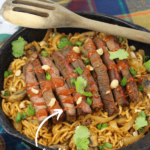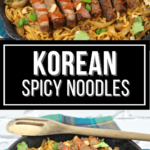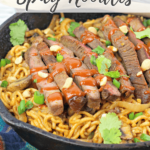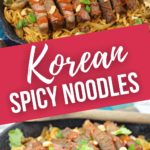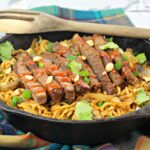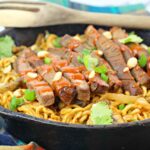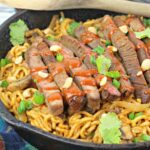Korean spicy noodles are just what you need if you’re looking to spice up your dinner routine. This popular dish is a favorite among Asian cuisine lovers who are looking for a little extra kick in their meal. Not only is it delicious and flavorful, but it’s also surprisingly easy to make.
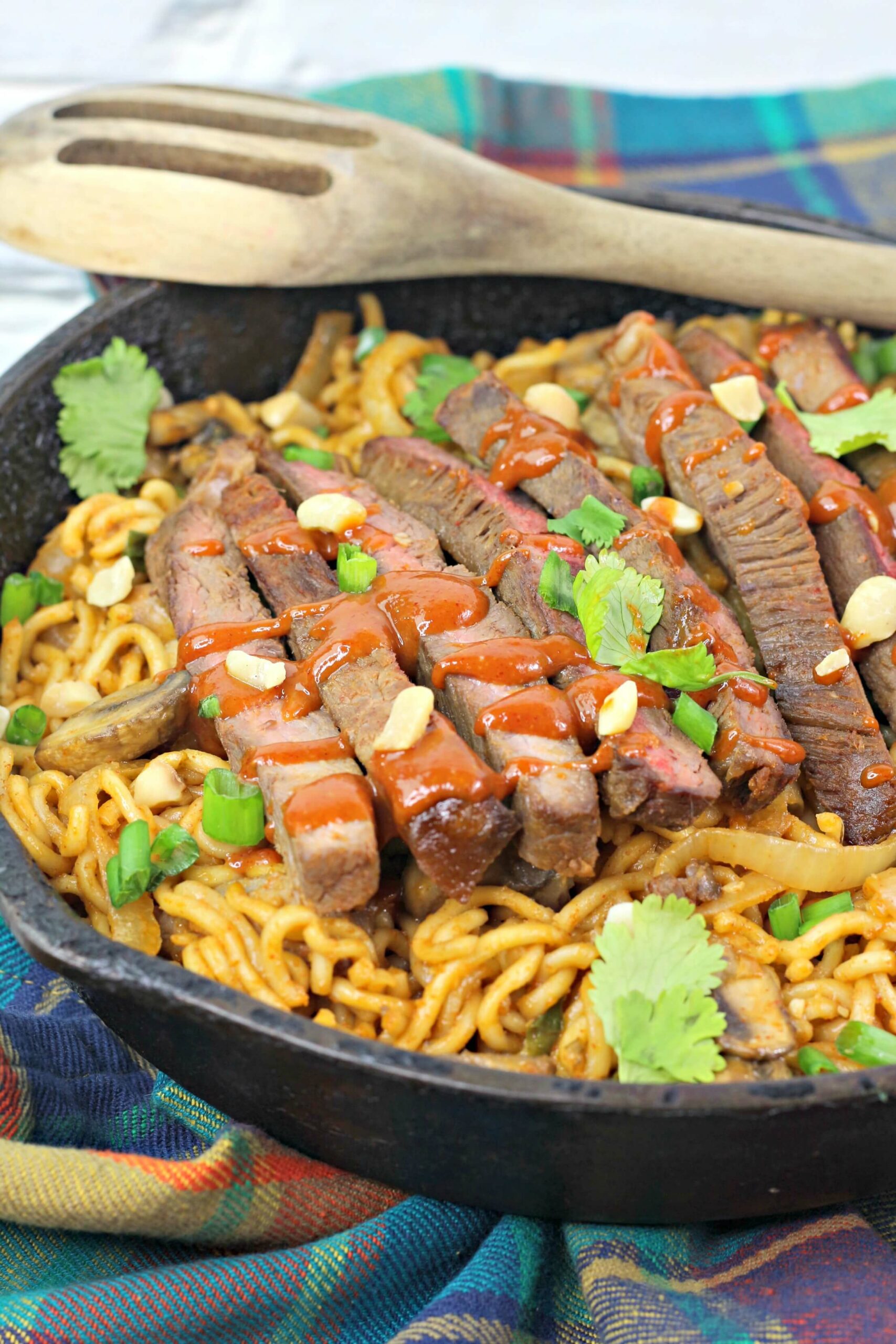
SAVE THIS RECIPE!
Enter your email below and we’ll send this recipe straight to your inbox.
Korean spicy noodles are a popular dish that originated in Korea and have been gaining traction around the world. If you’re looking for something flavorful, spicy, and delicious, this is the perfect easy meal for you! With its combination of noodles, vegetables, and spices, this Korean food brings together many different flavors that will tantalize your taste buds.
This traditional dish has been a favorite for centuries due to its delicious flavor and ease of preparation. From the comforting cooked noodles’ texture to the powerful flavor of spices, these spicy noodles offer an unforgettable taste experience.
If you’re looking for more Korean recipes, try these Korean Beef Bulgogi Bowl, Korean Beef and Broccoli, and Slow Cooker Korean Short Ribs.
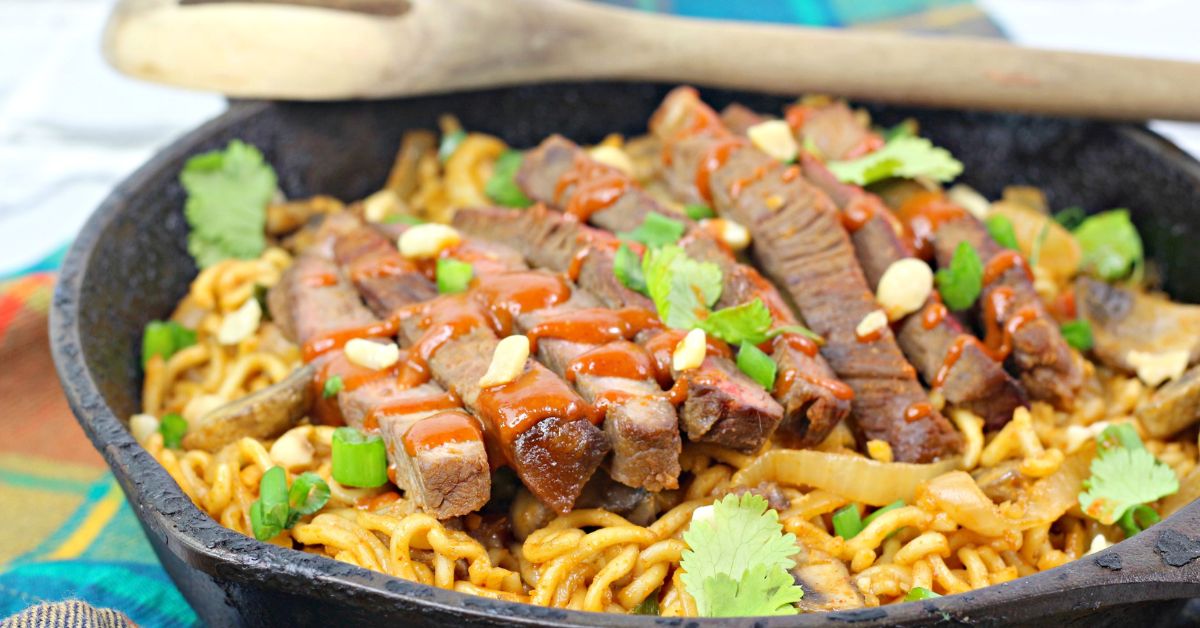
Why We Love Bibim Noodles
Korean hot noodles, also known as bibim noodles, are incredibly versatile and customizable, making them a favorite among those who love to experiment with flavors and textures.
- Family Friendly: The savory slightly sweet and spicy flavor of this dish is sure to please everyone in your family.
- Adaptable: This recipe uses traditional Korean ingredients but can easily be switched up to fit your dietary needs, whether you’re looking to make it low-carb, meat-free, or dairy-free. Switch up the noodles, try glass noodles, udon noodles, rice noodles, or any instant noodle that you like. Also, adjust the spice level to your family’s needs. If they love spicy food add more heat if they only like spicy add less.
- Makes Great Leftovers: This Korean noodle bowl is perfect for meal prep and can be great as leftovers for lunch or dinner.
Ingredient Notes
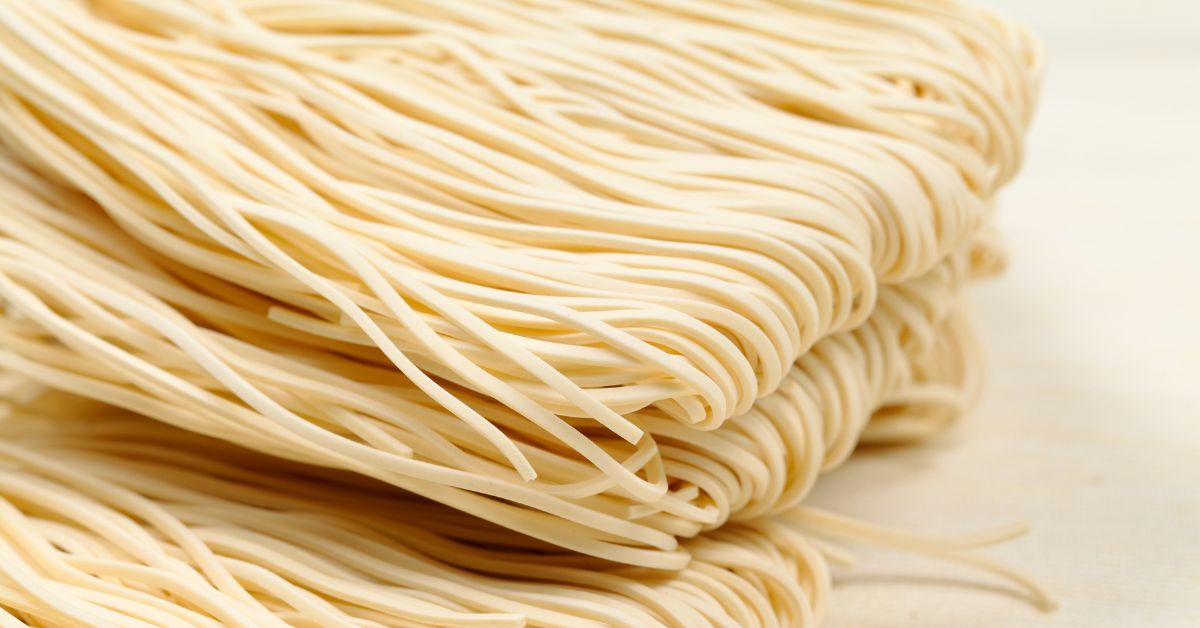
- Swiss Steak: We use thinly sliced Swiss steak in this recipe, but you can also different types of beef such as flank steak, ribeye, or tri-tip.
- Ramen: We recommend using beef-flavored ramen for this Korean spicy noodles recipe, but you can use whichever variety of ramen you prefer. You could also use different noodles such as shirataki noodles.
See my recipe card below for a complete list of the ingredients with measurements.
Variations and Substitutions for Spicy Korean Noodles
Bibim noodles are an incredibly versatile dish that can be easily changed in a variety of ways to taste. Packed with flavor, these noodles can range from mild to fiery and make a great meal for any occasion.
- Chili Paste: We use gochujang, a Korean chili paste, to add a savory and slightly sweet flavor. You can substitute this chili paste for something like sriracha or a chili bean paste.
- Vegetables: This recipe calls for mushrooms and onions but you can also add in some other veggies for more nutrition. Bell peppers and carrots are great additions to this meal.
- Rice Wine Vinegar: If you don’t have rice vinegar on hand, you can substitute for apple cider vinegar. Apple cider vinegar has a similar tangy flavor and acidity level that can work well in this dish.
How to Make This Recipe for Korean Spicy Noodles
This noodle dish is made with a variety of fresh vegetables, spicy gochujang sauce, and chewy noodles, which all come together to create a delicious and satisfying meal.
These are the basic steps for making Korean-inspired spicy ramen. Refer to the full, printable recipe card below for detailed instructions.
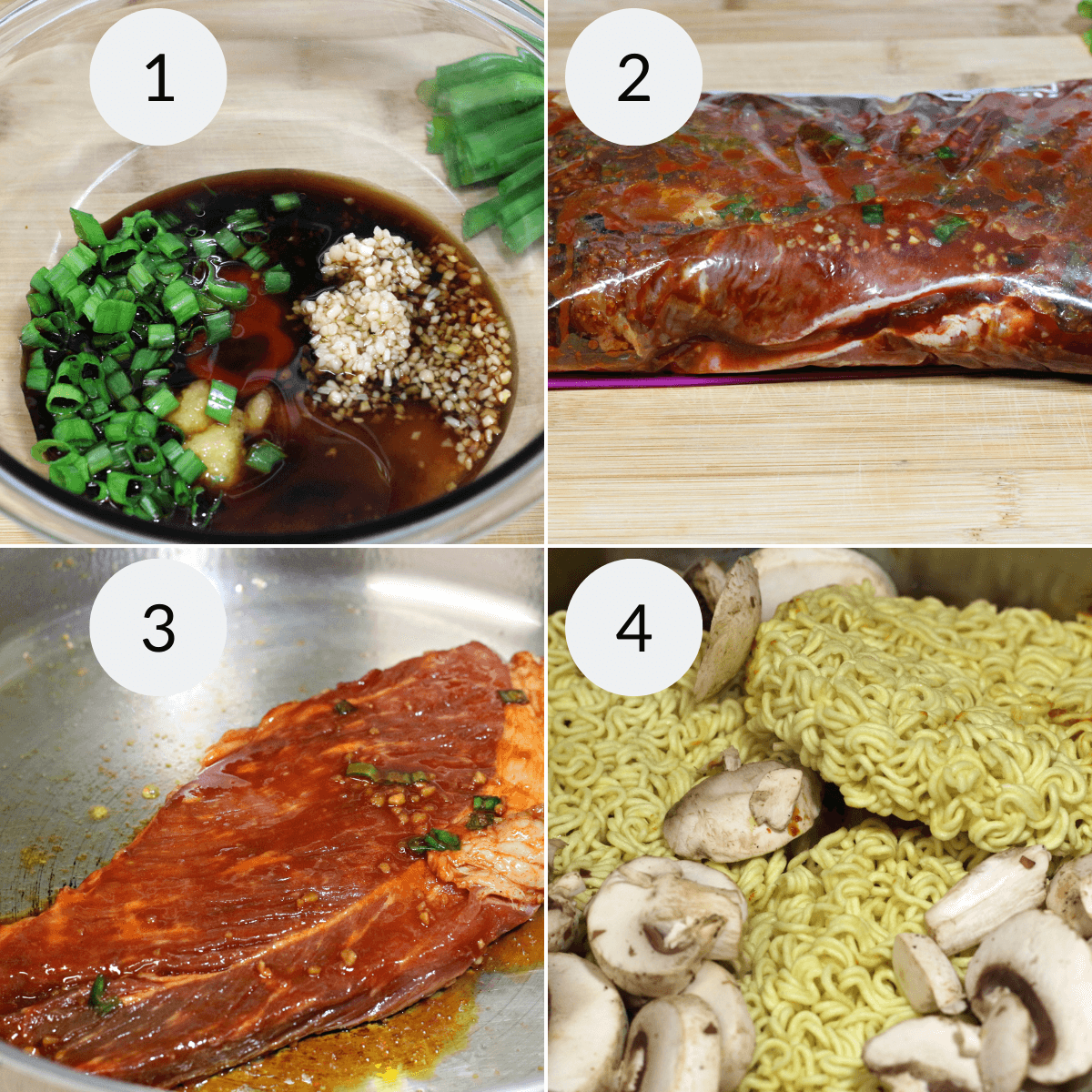
Step 1: Prepare Meat
In a small bowl add the gochujang, green onions, soy sauce, rice vinegar, garlic, ginger, sesame oil, and sugar. Whisk together these ingredients until well combined. Place half the sauce in a ziploc bag and add in the Swiss steak. Seal the bag and place it in the fridge to chill. Cover the remaining sauce and chill.
Step 2: Cook Steak
Drizzle a large pan or wok with oil and place on medium heat. Take the steak out of the ziplock bag and place it in the heated pan. Cook the steak for 5-8 minutes or until steak is brown. Remove the steak from the heated pan. Place on a cutting board and set aside.
Step 3: Cook Veggies and Noodles
Add the onions, mushrooms, noodles, ramen seasoning, and the leftover sauce from the ziplock bag into the heated pan. Add water to the pan until the ingredients start to simmer. Cook in the pan for 5-7 minutes or until noodles are tender. Stir the noodles occasionally.
Step 4: Slice and Add in Steak
Slice the cooked steak into half-inch slices. Add the sliced steak and the rest of the sauce to the hot pan. Stir and cook until the steak is done. If desired, you can garnish it with green onions.
Recipe FAQs about this Noodle Dish
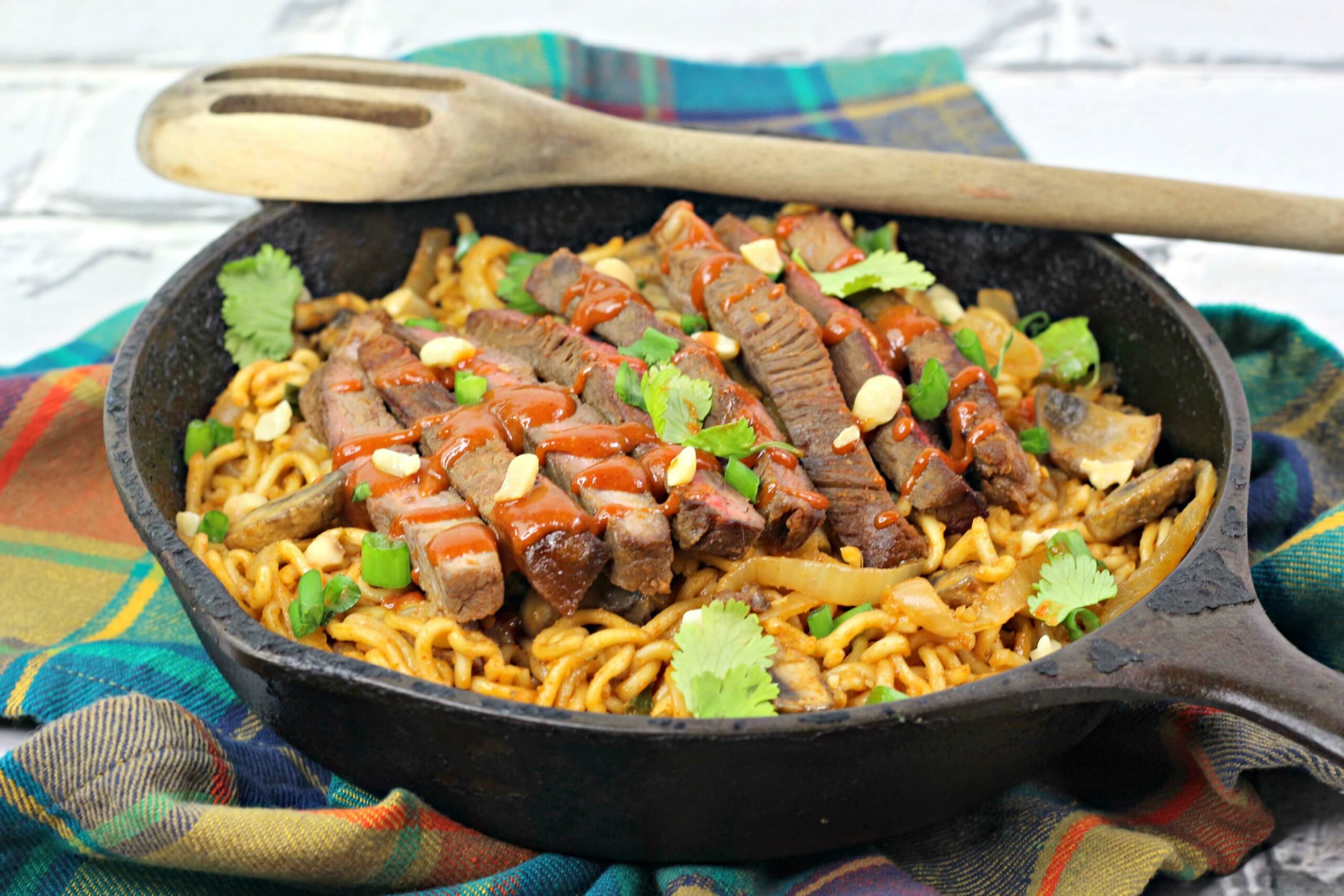
Expert Tips for Making Korean Spicy Noodles Recipe
Making the perfect batch of noodles doesn’t have to be a daunting task. Whether you’re an experienced chef or just starting out in the kitchen, we’ve got some easy tips to help you make the perfect dish. With these simple tips and a few ingredients, you’ll be able to create a delicious and flavorful meal that is sure to satisfy your taste buds.
- Freeze Steak: Freezing your steak for a few minutes can help when having to cut it very thin. When you freeze meat it becomes firmer and easier to slice thin.
- Garnish: You can also garnish these gochujang noodles with sesame seeds and kimchi for more flavor or crushed red pepper flakes for a little heat.
- Bok Choy: Bok Choy is a great addition to the flavorful noodles. Bok Choy is a common vegetable in Korean cuisine, and its mild flavor pairs well with the bold flavors of the spicy sauce.
- Meat: Different kinds of meat, beef or chicken, can be great to switch up the recipe. Tofu works well too.
What to Serve with Korean Spicy Noodles
- Bulgogi Korean BBQ
- Easy Kimchi Recipe
- Bulgogi Spring Rolls
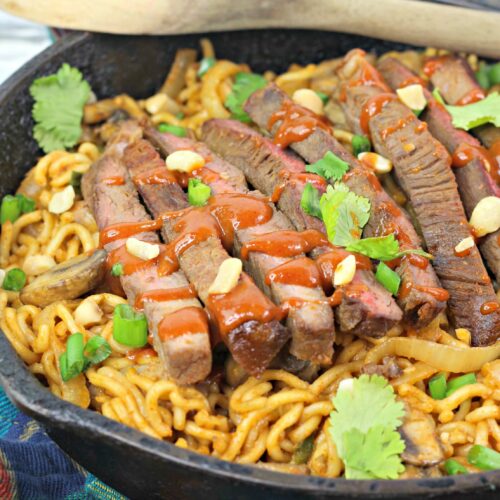
Korean Spicy Noodles
Equipment
Ingredients
- 3 pounds Swiss steak, room temp
- 2 tablespoons Oil
- 4 tablespoons Korean chile paste, Gochujang
- 2 tablespoons Green onions, thinly sliced
- 2 tablespoons Soy sauce
- 2 tablespoons Rice vinegar
- 3 tablespoons Minced garlic
- 1 teaspoon Ground ginger
- 1 tablespoon Sesame oil
- 4 teaspoons Sugar
- 3 Beef Ramen, package-include seasoning packet and 2 cups water
- ½ White onion, thinly sliced
- ½ cup Mushrooms, sliced
Instructions
- In a small bowl, whisk together the gochujang, green onions, soy sauce, rice vinegar, garlic, ginger, sesame oil, and sugar.
- Divide the sauce in half and add half into a ziplock bag.
- Add the Swiss steak into the bag and seal it.
- Put the ziplock bag with the steak in the refrigerator to chill. (from 30 minutes or overnight.)
- Cover the remaining half of the sauce and place in refrigerator.
- Place a large pan on the stove and drizzle with oil.
- Heat oil to a medium temperature.
- Place the steak from the ziploc bag into the heated pan with oil. (Keep the leftover sauce in the ziplock bag and set aside)
- Cook the steak on medium heat for 5-8 minutes or until the steak is brown and cooked.
- Remove the steak from the pan and place on a cutting board and set aside.
- Add the onions, mushrooms, ramen noodles, ramen seasoning, and the sauce from the ziploc bag to the pan.
- Add the water from the ramen to the pan until it starts to simmer. Cook for 5-7 minutes or until the noodles are cooked through.
- With the steak still on the cutting board, slice into 1/2 inch slices.
- Add the steak and the rest of the sauce to the pan.
- Continue to cook until the steak is heated through.
- Garnish with green onions or sesame seeds.
Expert Tips
- Freeze Steak: Freezing your steak for a few minutes can help when having to cut it very thin. When meat is frozen it becomes firmer and easier to slice thin.
- Garnish: You can also garnish these gochujang noodles with sesame seeds and kimchi for more flavor.
- Bok Choy: Bok Choy is a great addition to spicy noodles. Bok Choy is a common vegetable used in Korean cuisine, and its mild flavor pairs well with the bold flavors of the spicy sauce.
Estimated Nutritional Information
The nutritional information provided are estimates. To learn more about how I calculate this information go to www.itisakeeper.com/about-its-a-keeper/privacy-disclosure-policies/
This recipe is my personal adaption of an ethnic-inspired recipe. It is not intended to be an authentic recipe. I’ve recreated this recipe because I enjoy the flavors and I want to encourage my readers to expand their tastes and try new flavor combinations. The recipe, ingredients, and processes may have been adapted to make the recipe accessible to the average American. I have provided links to authentic versions of the recipe in the post above. I encourage you to visit these pages and learn more about the traditional version(s) of this recipe.


